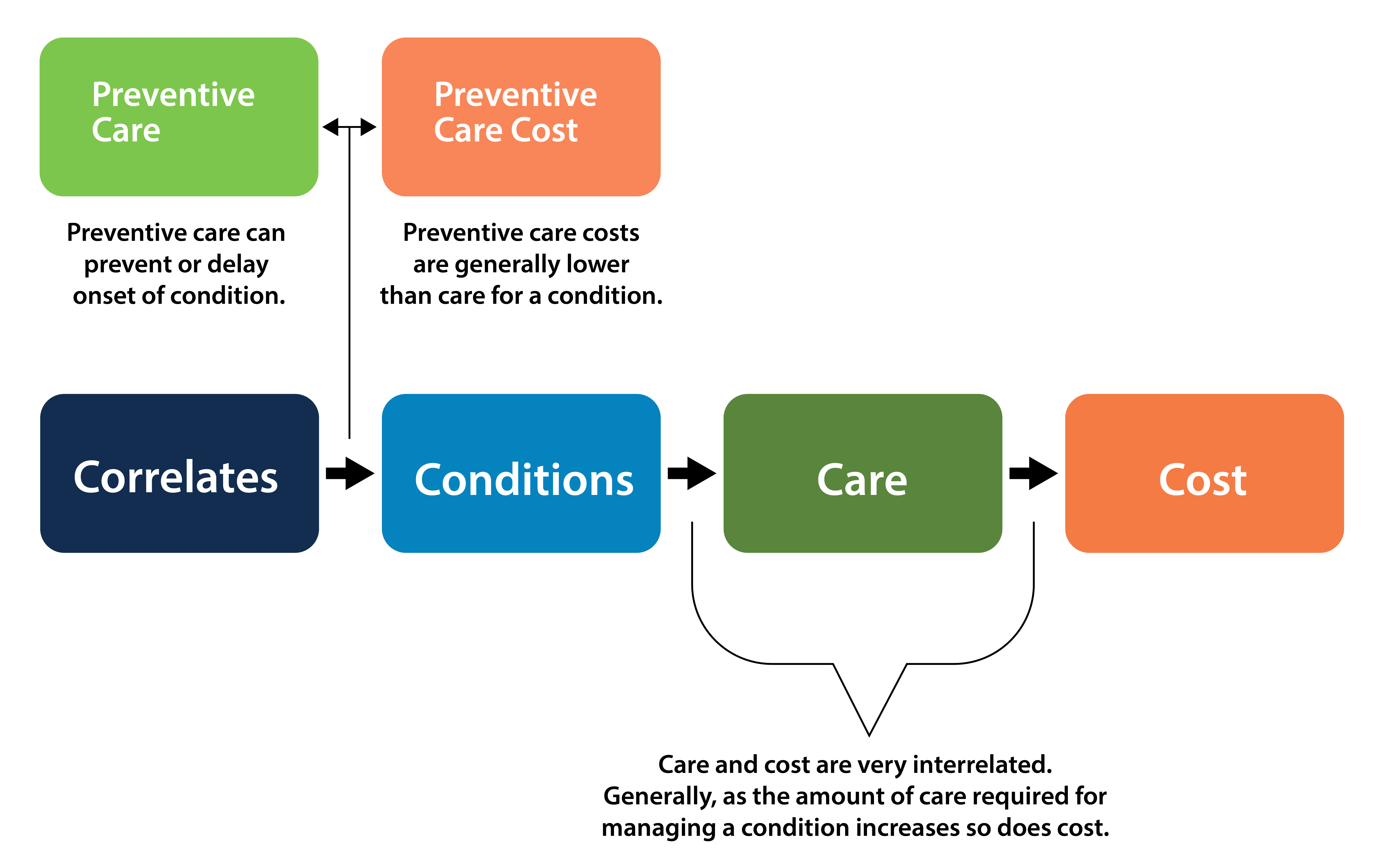1. About Health Statistics
Correlates, Conditions, Care, and Costs
In this module, correlates, conditions, care, and costs have been discussed separately. In practice, however, these concepts are often interrelated.
Correlates, or risk factors, may increase the risk of an individual developing a condition. If an individual has access to health care before they develop the condition, health care professionals will attempt to prevent the condition from occurring by trying to modify the correlates. Prevention efforts, like modifying correlates, generally have a lower overall health care cost than treating a condition. Similarly, the societal cost of the disease, measured by the Health-Related Quality of Life, will be less. As the disease develops or worsens, the amount of required care increases as well as the costs, both societal and economic.
To better understand how these concepts relate, let’s review a common example. Poor eating habits such as overeating or eating nutritionally poor foods (e.g., “junk food”) and lack of exercise increase the risk of diabetes. In this example, poor diet and lack of exercise are correlates for diabetes, which is the condition. When an individual has access to health care, the providers (doctors, nurses, etc.) will try to prevent the individual from developing a condition by changing the correlates (poor diet and exercise) associated with the condition (diabetes). The prevention efforts could be as simple as changing the individual’s diet and increasing exercise, both of which have relatively low costs. If the individual develops diabetes, then the need for health care will increase as the individual will need more frequent visits to monitor the condition, and the cost will also rise to treatment needs increase.

